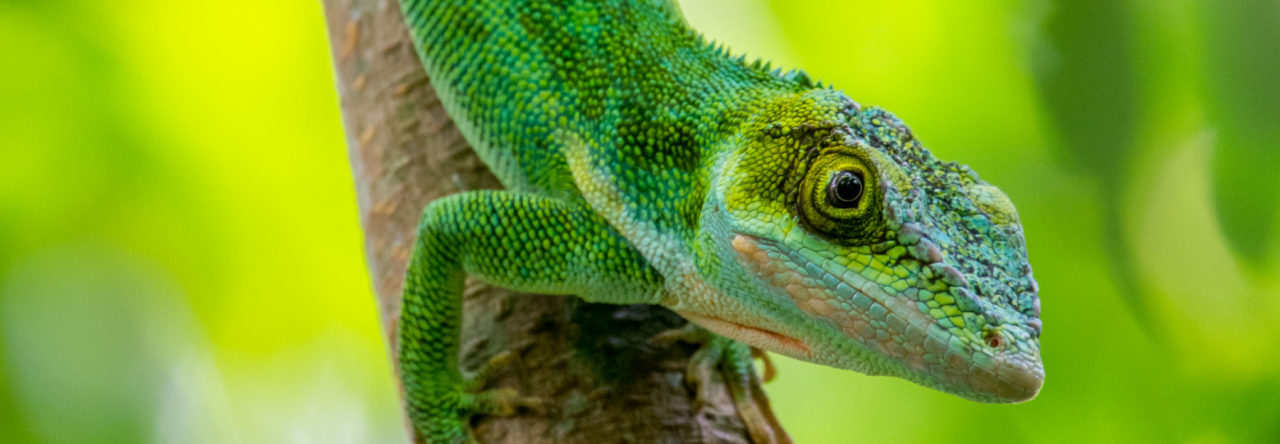
Grackle snacking on an anole in Florida. Photo by Andy Wilson from http://www.pbase.com/andywilson/image/60039533
Most anole watchers have experienced the phenomenon of walking up to an anole and having it display. What good could come of displaying to a potential predator thousands of times more massive? In a perceptive experiment, Leal suggested that anoles actually are trying to tell the predators something: specifically, that a displaying lizard is very fit, and that a potential predator, in this case a snake, would be better served looking elsewhere for a meal.
But there are few observations of anoles displaying to predators in nature. In a recent Natural History Note in Herpetological Review (42:427-428), Catherine Levey documents one such instance: “I observed an adult female boat-tailed grackle (Quiscalus major) on a sidewalk with an A. sagrei in its bill. The anole was approximately 7 cm snout-vent length. The bird was vigorously shaking the anole with sideways flicks of its head. After about five seconds, it put the anole down on the pavement. The anole immediately arched its back, fully extended its dewlap, and became immobile. The bird looked at it and did not move for about five seconds. It then pecked the anole several times near the head, which caused the anole to withdraw its dewlap and run. The bird pursued it and picked it up. The anole thrashed in the bird’s bill; it did not extend its dewlap. Again, the bird put it down and again it immediately displayed its dewlap. the bird paused for a few seconds, picked up the lizard by its midsection, and flew out of sight.”
Read More










